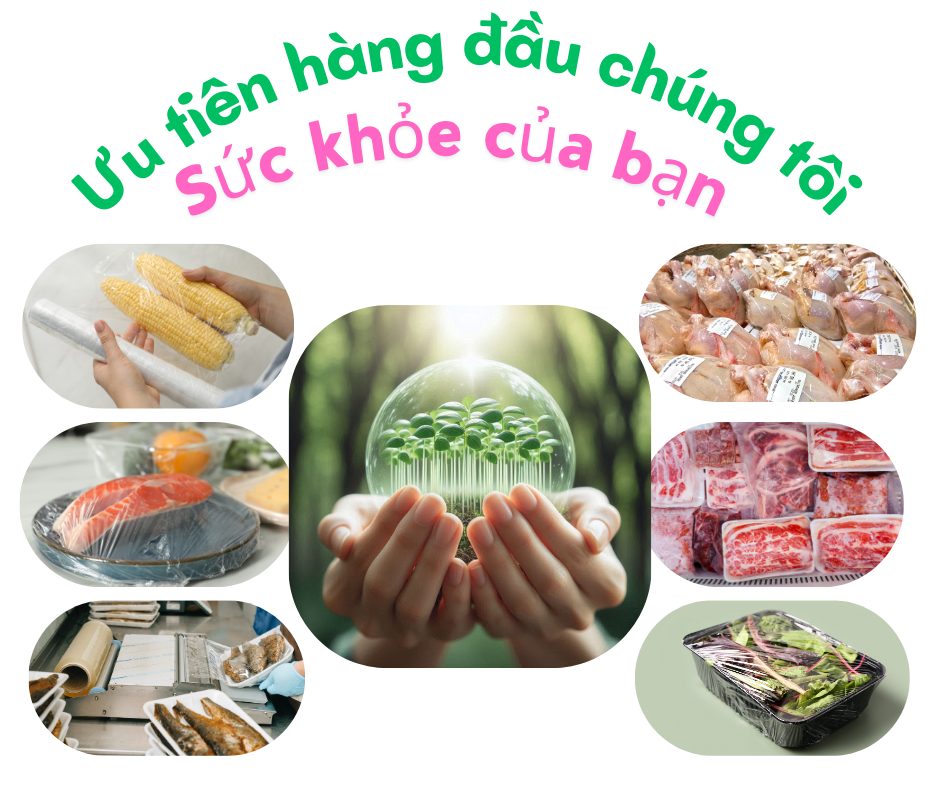
In the modern world, health and the environment are top concerns for consumers. At Samyoung, we deeply understand this and are committed to delivering safe, high-quality products that contribute to public health protection.
We take pride in being a leading manufacturer of PVC wrap film, utilizing advanced technology without harmful substances, ensuring absolute safety for consumers. Our products are made with plant-based additives, making them environmentally friendly and minimizing negative impacts on the ecosystem.
Beyond ensuring food safety, Samyoung’s PVC wrap film extends food preservation time, maintaining its natural flavor and freshness. By adhering to strict production standards, we provide an effective and health-conscious food storage solution for your family.
Our commitment goes beyond manufacturing quality products—we strive to build a greener and more sustainable future. By using eco-friendly materials, we help reduce plastic waste and environmental pollution, protecting the planet for future generations.
Samyoung – Your Health is Our Top Priority! Choose safe and eco-friendly products for a healthier and more sustainable life.
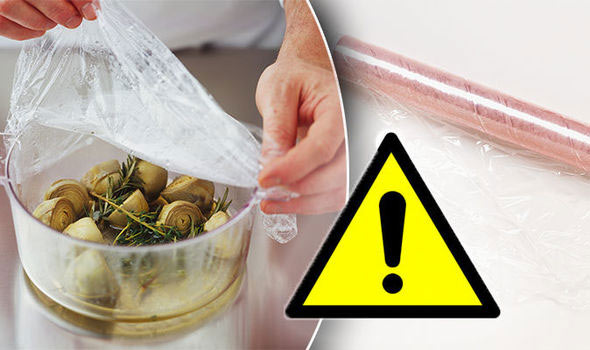
-
Release of Harmful Chemicals
Low-quality wrap film may contain BPA, phthalates, or other toxic compounds that can leach into food when exposed to high temperatures, posing health risks.
-
Not Heat-Resistant
Some substandard wrap film may melt or deform when used in microwaves or with hot food, increasing the risk of contamination.
-
Unpleasant Odor & Impact on Food Flavor
Inferior wrap film often have a strong plastic smell, which can alter the taste of food and create an unpleasant experience.
-
Easily Torn & Ineffective Food Protection
Poor-quality wrap film have weak adhesion, tear easily, and fail to protect food properly from bacteria, moisture, and air.
-
Environmental Pollution
Many low-quality wrap film are made from non-biodegradable materials, making recycling difficult and negatively impacting the environment.
Proper Meat Wrapping and Storage
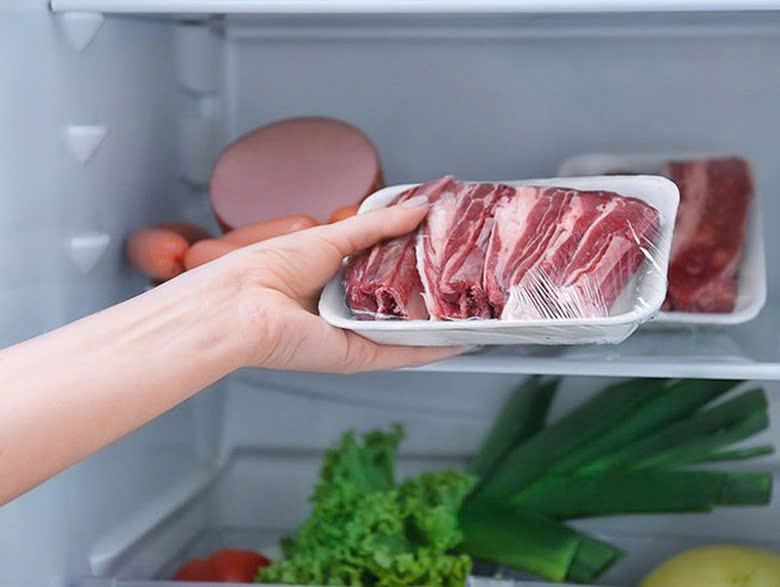
- Do Not Wrap Meat Too Tightly: Fresh meat needs some space to allow moisture to escape, preventing the growth of bacteria.
- Seal Properly but Do Not Completely Block Airflow: To prevent moisture buildup, use plastic wrap in combination with a food storage container for better preservation.
- Avoid Contact with Other Foods: When storing meat in the refrigerator, place it in a separate compartment or on a plate before wrapping it to prevent cross-contamination.
Storing Meat in the Refrigerator and Freezer
- Refrigerator Storage (0 – 4°C): If you plan to use the meat within 1-2 days, wrap it with plastic wrap and store it in the refrigerator.
- Freezing for Long-Term Storage: If not using the meat immediately, wrap it in plastic wrap and place it in a zip-lock bag or an airtight container to prevent drying out and loss of quality.
- Label with Storage Date: To avoid keeping meat for too long, mark the storage date on the wrap or container for easier tracking of its freshness.
Some Important Notes
- Do Not Defrost Meat with Plastic Wrap in the Microwave: Some types of plastic wrap may not withstand heat and could release harmful chemicals. Always remove the plastic wrap before defrosting.
- Do Not Reuse Plastic Wrap: Used plastic wrap may contain bacteria and is not hygienically safe.
- Wash Hands Thoroughly Before and After Handling Meat: This helps prevent cross-contamination when handling raw food.
Conclusion
Plastic wrap is a useful tool for preserving meat, helping to maintain freshness and reduce bacterial contamination. However, it is essential to choose the right type of wrap, use it properly, and follow food safety guidelines to protect your family’s health.
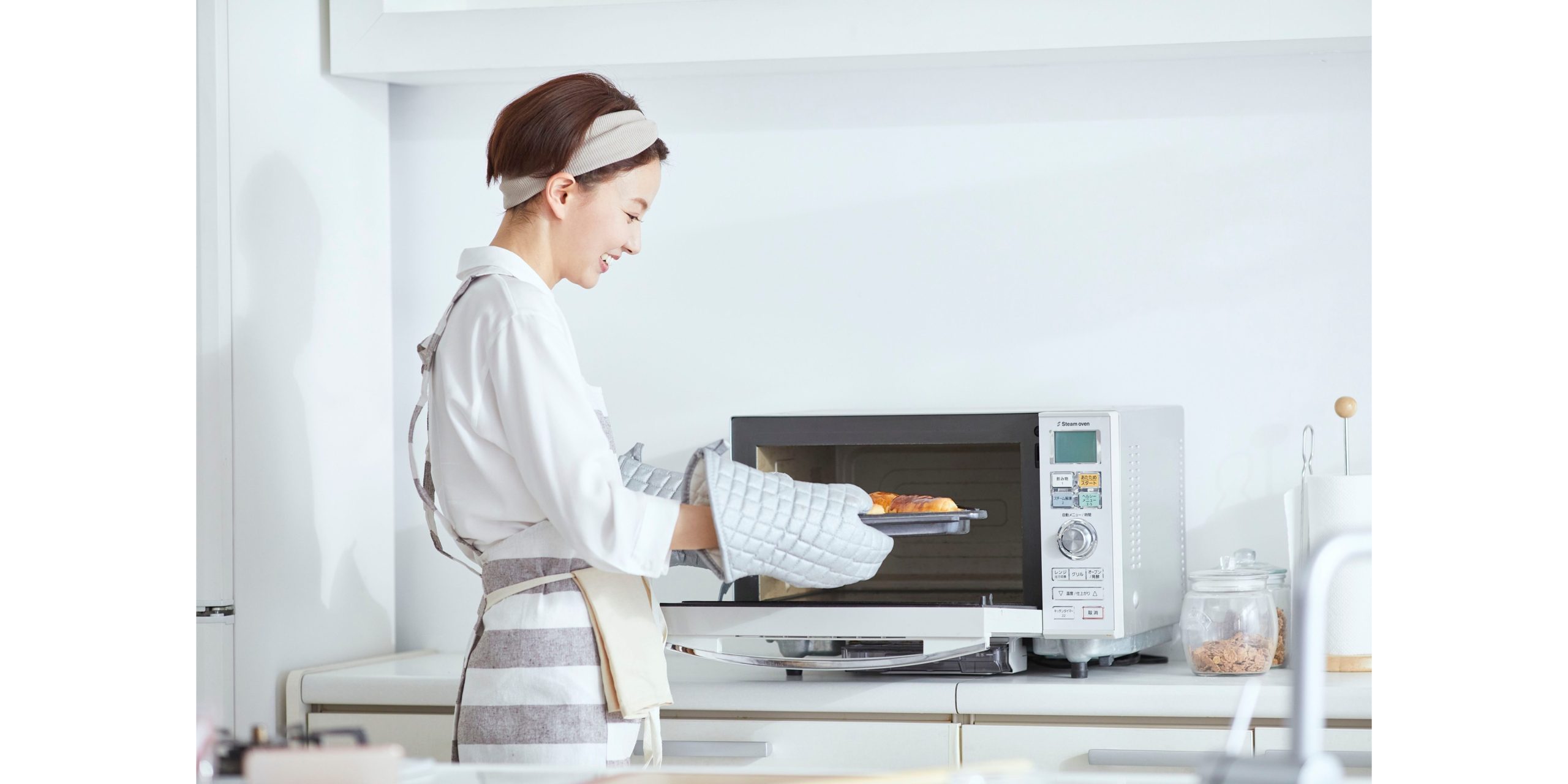
The answer is YES, but only if you use the right type of PVC wrap film that is safe and designed for microwave use. Not all PVC wraps film can withstand the high temperatures of a microwave. Some may melt and release harmful chemicals into food when exposed to heat.
How to Identify Microwave-Safe Plastic Wrap
- Look for the “Microwave Safe” label or a microwave symbol on the product packaging.
- Avoid PVC wraps film that contain BPA or phthalates, as these chemicals can pose health risks when heated.
How to Use Plastic Wrap in the Microwave Safely
To ensure safety, follow these key guidelines when using plastic wrap in the microwave:
- Avoid direct contact with food – Steam can cause the wrap to stick to food, increasing the risk of chemical contamination.
- Leave a small opening – Allow steam to escape to prevent pressure buildup that could cause the wrap to burst.
- Use low or medium heat settings – This reduces the risk of melting and chemical release.
- Avoid heating high-fat foods – Oils and fats can reach very high temperatures, causing the wrap to melt faster.
Benefits of Using PVC wraps film Correctly
- Helps keep food from drying out when reheating.
- Prevents food from splattering inside the microwave.
- Retains moisture and nutrients better for improved food quality.
Conclusion
PVC wraps film can be safely used in the microwave if you choose the right type and follow proper usage guidelines. Always check product labels for safety certifications and follow best practices to protect your health and your family’s well-being.
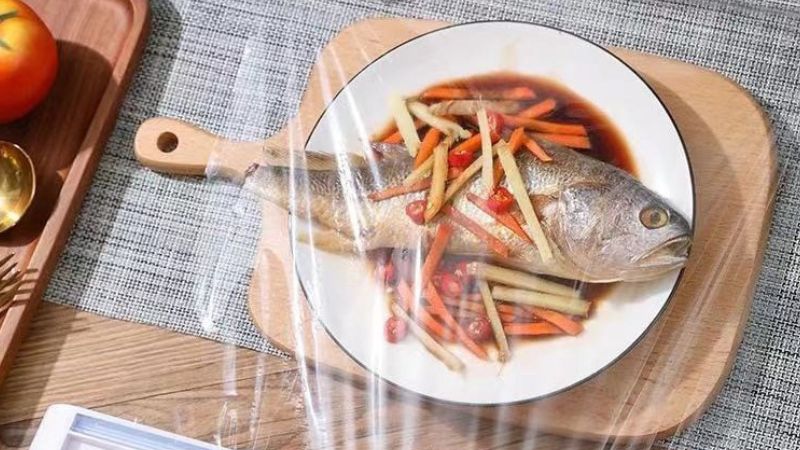
The safe distance when using PVC wrap film depends on how it is used:
1. When Wrapping Cold Food or Storing in the Refrigerator
- PVC wrap film can come into direct contact with food.
2. When Using in the Microwave
- Safe distance: Keep at least 2–3 cm between the PVC wrap film and the food surface to prevent melting and chemical contamination.
3. When Wrapping Hot Food
- Allow food to cool below 70°C before wrapping to avoid the release of harmful chemicals from the plastic.
By following these guidelines, you can use PVC wrap film safely and minimize health risks.
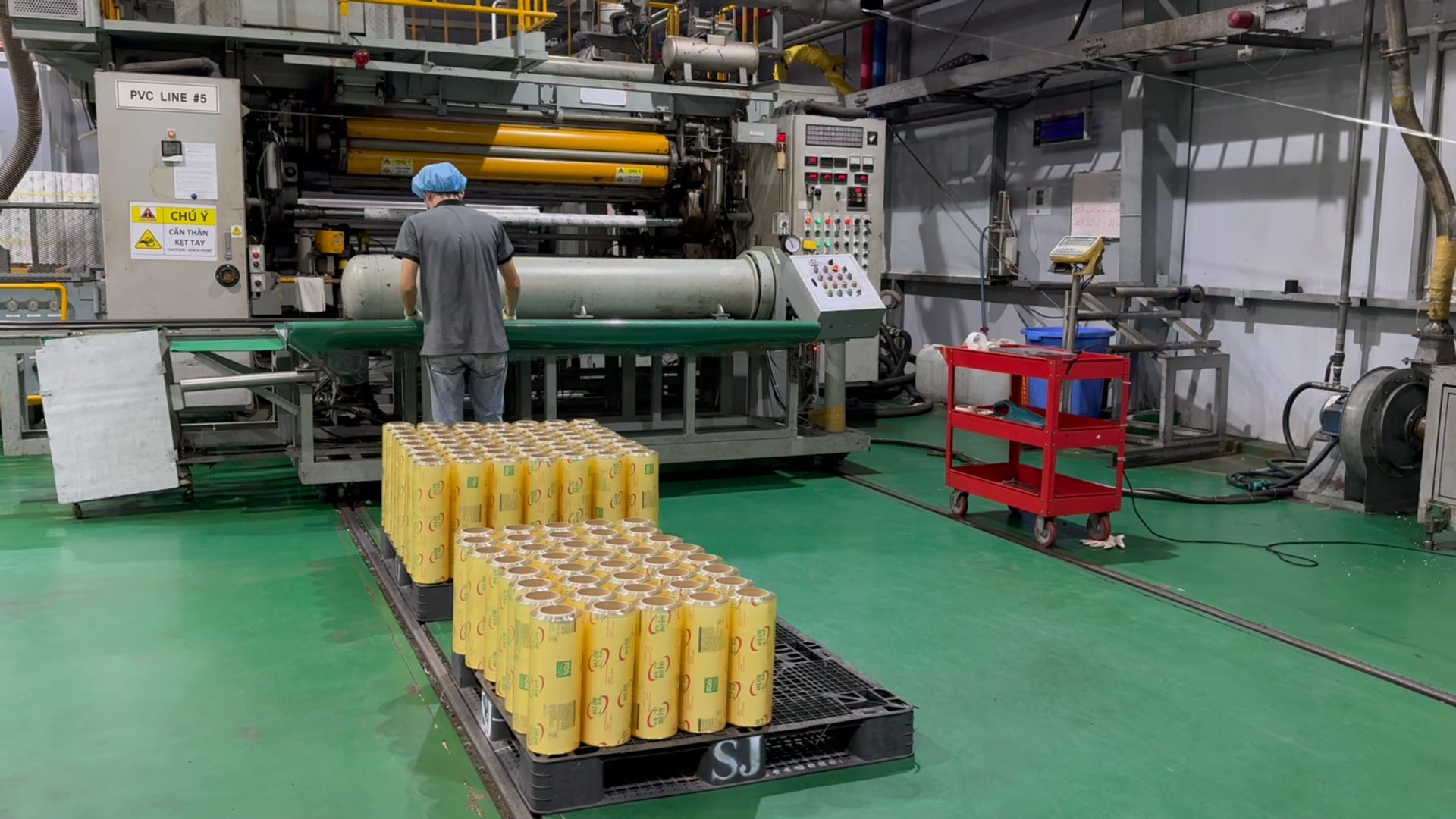
Consumers today are increasingly prioritizing health-safe and eco-friendly products. Choosing to distribute high-quality PVC wrap film with clear origins will:
✅ Meet customer demand for food safety.
🌟 Enhance competitiveness and create market differentiation.
🔍 Ensure transparency—a key factor customers always look for.
🌍 Contribute to your sustainable business strategy.
📊 Key Statistics:
📌 “70% of consumers are willing to pay more for safer products.”
This is your chance to lead the trend, boost revenue, and strengthen brand credibility! 🚀
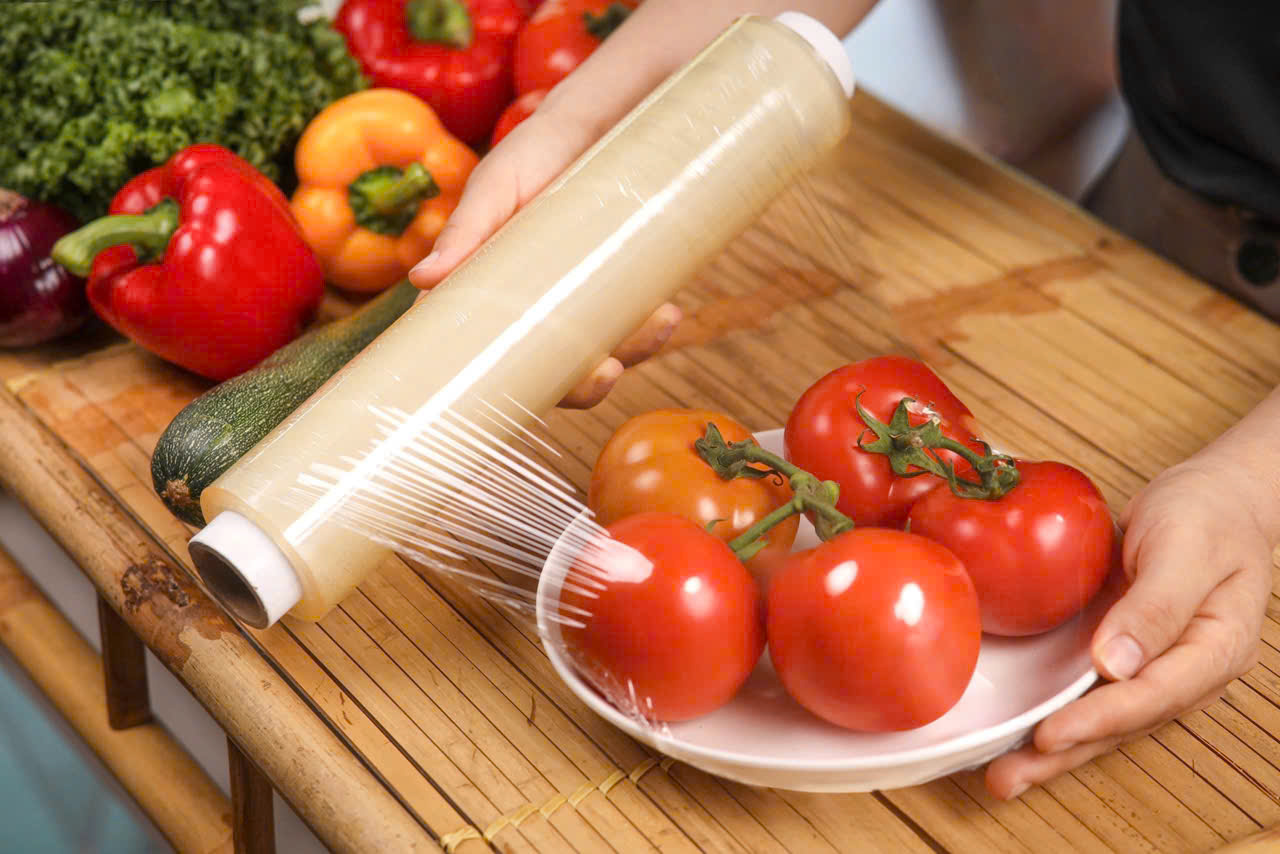
Fruits and vegetables are an essential source of nutrients in daily meals, but they wilt and lose nutrients quickly if not stored properly. Using high-quality PVC wrap film is an effective solution to keep them fresh for longer.
Here are some useful tips to help you preserve fruits and vegetables effectively with PVC wrap film:
Effective Ways to Preserve Fruits and Vegetables with PVC wrap film
Step 1: Wash and Dry Properly
- Wash fruits and vegetables thoroughly to remove dirt and harmful chemicals.
- Use a clean towel or let them air dry completely before wrapping.
Step 2: Wrap Properly with PVC wrap film
- Wrap tightly without applying excessive pressure to avoid bruising.
- For leafy greens (such as water spinach or mustard greens), wrap the stems completely to retain moisture.
- For fruits like bananas, strawberries, and papayas, wrap individual portions or whole fruits as needed.
Step 3: Store Correctly
- Store wrapped vegetables in the refrigerator’s crisper drawer for optimal freshness.
- For herbs like scallions, basil, and cilantro, wrap them tightly and place them in a plastic container before refrigerating.
- Minimize opening the wrap repeatedly to prevent food from losing its freshness.
Benefits of Using High-Quality Plastic Wrap
✅ Keeps food fresh – Prevents drying out, preserving color and flavor.
🍃 Reduces wilting, drying, and bruising – Slows oxidation and spoilage.
🛡 Protects against bacteria – Some plastic wraps contain antibacterial properties to prevent mold.
💰 Saves money – Extends shelf life, reducing food waste.
Conclusion
Using plastic wrap is an effective way to keep fruits and vegetables fresh and safe. Choosing high-quality PVC wrap film and following proper storage methods will help you save time and reduce food waste. 🌿🥦🍓
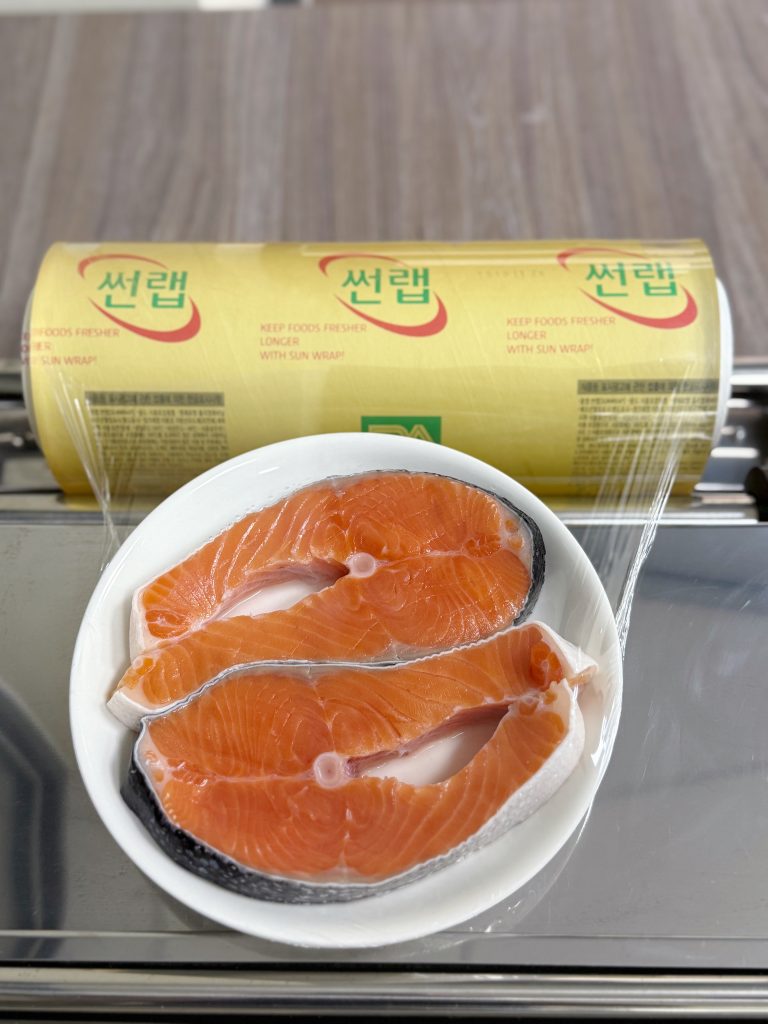
In the food, agriculture, and various manufacturing industries, PVC wrap film plays a crucial role in preserving products, preventing contamination, and extending shelf life. However, opting for low-quality PVC wrap film to reduce initial costs can lead to long-term issues.
Choosing high-quality PVC wrap film not only ensures hygiene and safety but also helps optimize costs effectively by reducing waste and maintaining product quality.
1. Benefits of Using High-Quality PVC wrap film
Effective Preservation & Extended Product Shelf Life
High-quality PVC wrap film provides a strong, airtight seal, preventing exposure to moisture, bacteria, and dust. This helps keep products fresh, reducing spoilage and minimizing losses.
Cost Savings
- Low-quality PVC wrap film is often thin, uneven, and tears easily, requiring frequent replacements, leading to higher costs.
- Premium PVC wrap film offers better durability and elasticity, reducing waste and lowering long-term expenses.
Health & Safety Assurance
- Inferior PVC wrap film may contain harmful chemicals like phthalates and heavy metals, posing health risks.
- Certified high-quality PVC wrap film is free from toxic substances, ensuring food safety and hygiene.
2. How to Choose High-Quality PVC wrap film
✔ Consistent Thickness: Prevents tearing and ensures secure wrapping.
✔ Good Elasticity: Makes wrapping easier and reduces material waste.
✔ Free from Harmful Chemicals: Look for products certified for safety and compliant with health standards.
By choosing the right PVC wrap film, you can enhance product quality, ensure safety, and reduce costs effectively. ✅♻
Protect Your Family with Every Small Choice!

Smart Choices – Protect Your Family’s Health
In modern life, family health is a top priority. One of the most crucial factors affecting our well-being is the food we consume daily. However, many people overlook the fact that proper food storage plays an equally important role. Choosing high-quality, safe food wrap is a simple yet highly effective solution to protect your family.
Why Choose Safe Food Wrap?
🔹 Avoid Chemical Contamination
Low-quality PVC wrap film may contain harmful chemicals like BPA, phthalates, etc. When exposed to food—especially hot or oily foods—these chemicals can leach into your meals, potentially harming your health.
🔹 Keep Food Fresher for Longer
High-quality PVC wrap film prevents bacterial contamination, slows oxidation, and extends food freshness, reducing waste.
🔹 Protect Your Family’s Health
Using safe PVC wrap film reduces the risk of food poisoning, keeping your family—especially children and the elderly—safe from harmful substances.
How to Choose Safe Food Wrap?
✅ Look for Clear Product Origins
Purchase PVC wrap film from reputable brands that have been certified for food safety.
✅ Check the Material
Choose wraps made from PVC or PE that are free from BPA and phthalates, ensuring safe contact with food.
✅ Read Usage Instructions Carefully
Some wraps are only suitable for cold foods and should not be used in microwaves or with hot food.
✅ Prioritize Eco-Friendly Products
Today, many biodegradable PVC wrap film help protect both your health and the environment.
Make Smart Choices – Protect Your Family’s Health
Using high-quality food wrap not only preserves food better but also plays a crucial role in safeguarding your family’s health.
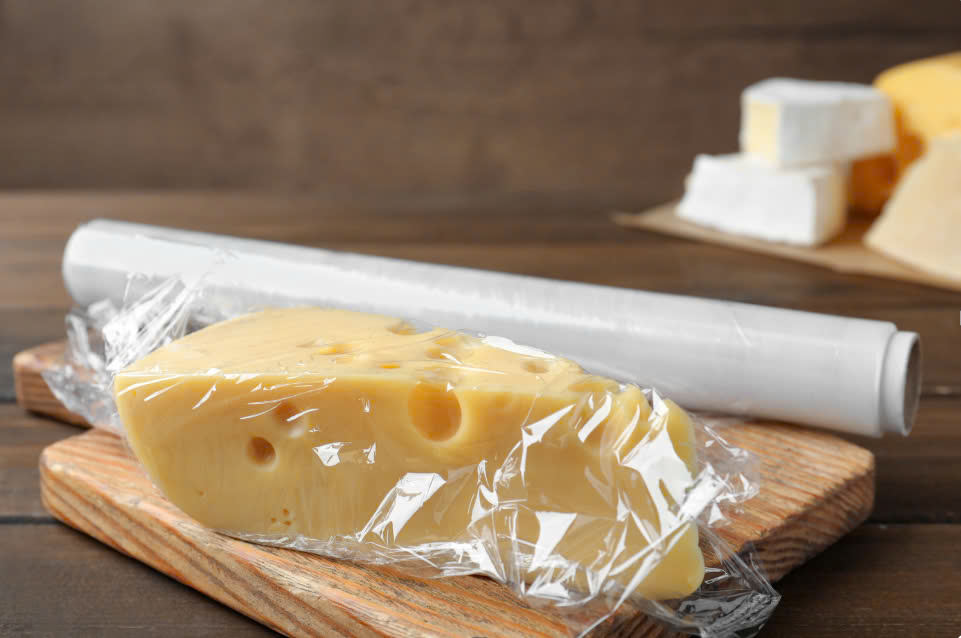
Wrap film is a convenient solution for keeping food fresh, preventing bacterial contamination, and retaining moisture. However, when storing foods high in fat and oil, such as butter, cheese, cold cuts, or fried foods, it is essential to choose the appropriate type of wrap film to ensure food safety.
1. Risks of Using Inappropriate Wrap film
- PVC wrap film may leach chemicals into fatty foods: Some PVC wrap film contain plasticizers that can dissolve in fats and migrate into food, potentially affecting health.
- Reduced adhesion when in contact with oil: Oil and grease can weaken the adhesive properties of the wrap film, making storage less effective.
- Impact on food quality: Using the wrong wrap film may alter the taste and shorten the shelf life of food.
2. Choosing Safe Food Wrap for Fatty Foods
- Use PVC wrap film specifically designed for fatty foods: Some food wrap are made for storing oily foods and are labeled “safe for fatty foods” or meet food safety standards.
- Consider alternatives like parchment paper or glass containers: If concerned about chemicals from wrap film, parchment paper or glass containers can be safer options.
3. Proper Use of Food Wrap for Storing Fatty Foods
- Avoid direct contact between PVC wrap film and oily foods: If using PVC wrap film, place a layer of parchment paper between the food and the wrap to prevent direct exposure.
- Do not heat oily foods with plastic wrap: Some wrap film may release harmful chemicals when exposed to high heat. Remove the wrap film before reheating or use microwave-safe alternatives.
- Ensure proper wrapping and storage: Wrap film tightly but not excessively to maintain its texture and freshness.
Conclusion
Using wrap film for preserving fatty and oily foods requires careful selection to ensure health and safety. Choosing the right type of wrap film and following proper storage methods will help keep food fresh and safe to eat!
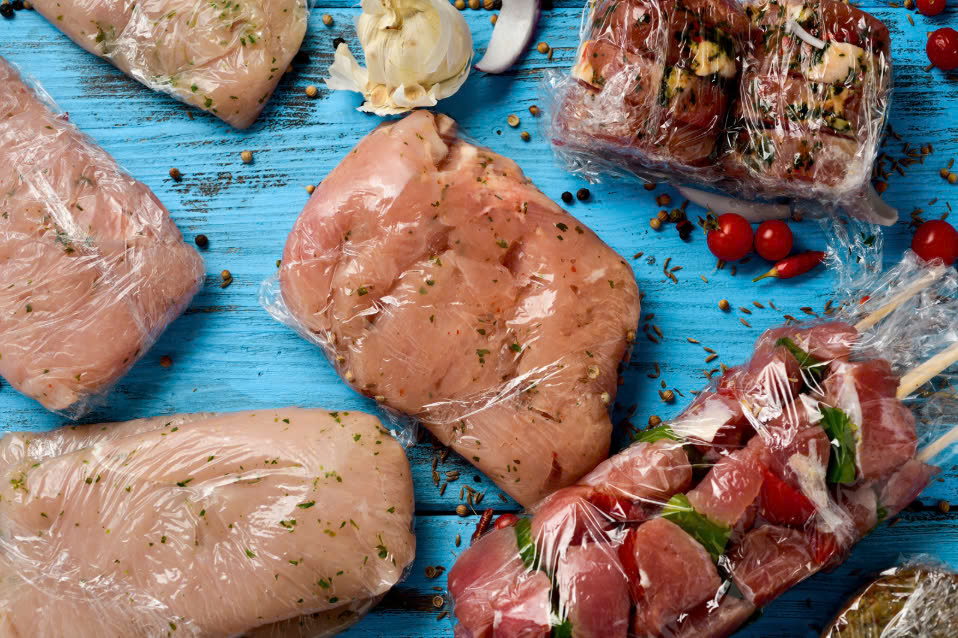
Wrap film is an essential helper in food preparation and ingredient handling before cooking. Especially when marinating meat or fish with spices, wrap film helps keep the ingredients fresh, prevents bacterial contamination, and ensures even absorption of flavors.
1. Enhances Flavor Absorption
- When marinating meat or fish with ingredients such as fish sauce, salt, pepper, garlic, and onions, wrapping it tightly prevents the spices from evaporating, allowing them to penetrate the food more effectively.
- If food is exposed to air for too long, spices may dry out or lose some of their aroma. Using wrap film helps retain moisture and enhances the marination process.
2. Prevents Odors from Spreading in the Refrigerator
- Marinated meat or fish stored in the refrigerator can release strong odors that may affect other foods.
- Wrapping food properly with food wrap helps seal in the smell, keeping the refrigerator fresh and the kitchen space clean.
Conclusion
With these benefits, wrap film makes cooking more organized, convenient, and efficient. To ensure health and safety, always choose wrap film that is free from harmful chemicals.










